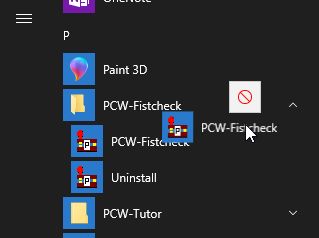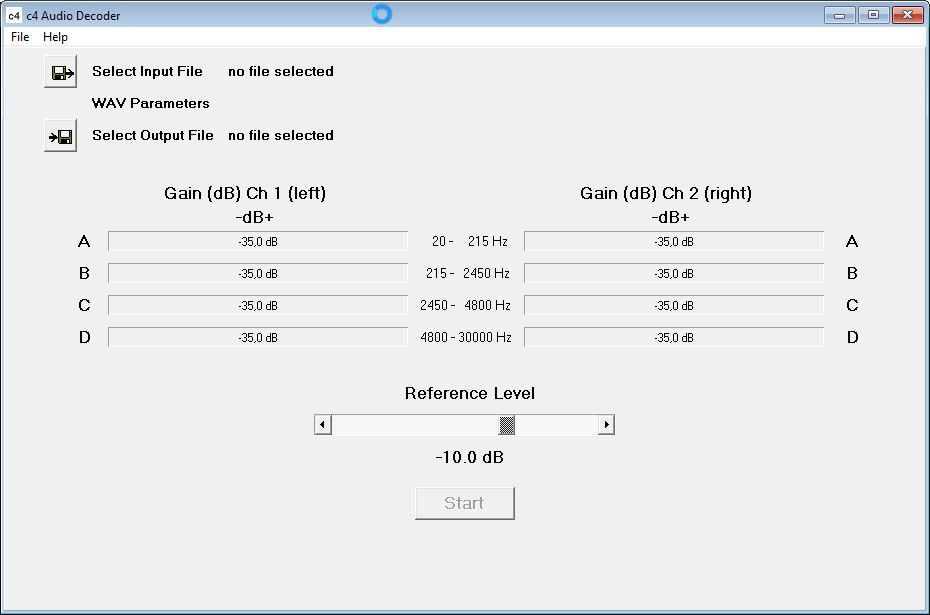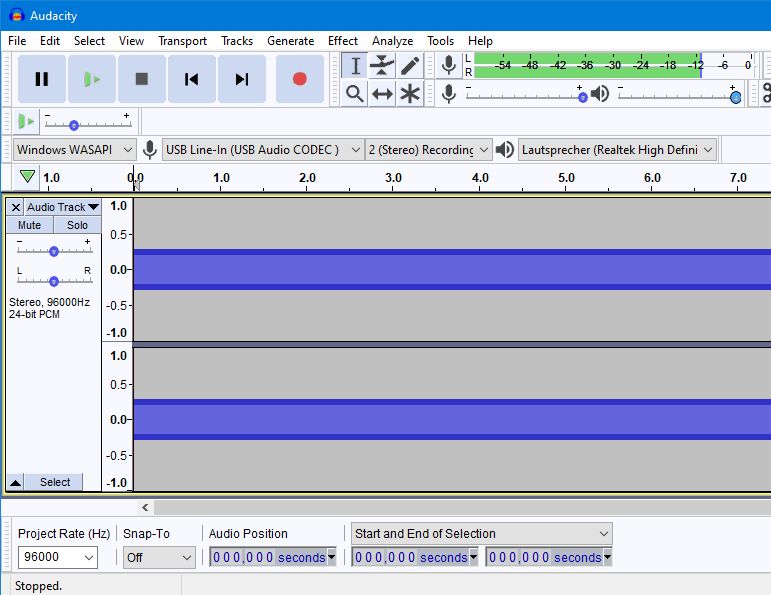
Welcome to the C4 Audio Decoder help page.
I sincerely hope that the information herein will help you to make better use of
C4 Audio Decoder.
These help pages are valid for version 0.9.0 and later
C4 Audio Decoder is software, written for PCs running the Windows operating system. It allows you to process or "decode" audio recordings, specifically audio tape recordings that have previously been recorded while using the compressor part of a telcom C4 noise-reduction system (*).
C4 Audio Decoder is specifically designed to decode recordings made with this compander system. It is not suitable for recordings made with other compander systems and also not suitable for cleaning or for removing noise from any old tape recordings.
This software has been designed with appropriate care, it should not exhibit any harmful side effects. Nevertheless, you use it at your own risk. If you do not agree, then please do not use it.
Go to top.You can download the most recent version of this software in a zipped archive from here. Save the archive file on your computer and remember the location.
Go to top.When you download and install C4 Audio Decoder, you are granted a personal, non-exclusive and unlimited license, completely free of charge.
Go to top.Double-click on the saved archive file. The archive should open and display a single file:
(The version information "x.x.x" reflects the current version.)
Start the installation by double-clicking on the executable file.
A welcome window will open. Click "Next" and the license agreement will be displayed.
If you agree to the terms of the license agreement then you should check the "I agree ..." box and
click on the "Next" button. Then installation will start.
The installation process is simple, there are no new DLLs, no additions to the registry file, and no changes to your
operating system. An entry will be added to the startup menu and an icon will be placed on your desktop.
The installation can be reversed without a trace left.
I'm afraid, there is no other way than you just go on and trust me. Switch off your Antivirus system while you install C4 Audio Decoder. And in case your Windows OS is complaining as well, there should be a button like "do it anyway" or "I know what I'm doing". Try this.
There is a chance to increase trust in the installer software package: On the page you used to download the installer software, I have published the SHA256 checksum for exactly this software package. After downloading the file, you can yourself calculate the SHA256 checksum for that file you now have on your PC. And when those two checksums are identical, you can be sure that you have the original file and nobody has tampered with it.
To calculate the SHA256 checksum you again need a piece of software, e.g. Hashing for Windows. And this is easy, free and open source. You can get it from here: Hashing App.
Go to top.
On certain installations of Windows 10 the automatic placement of an icon on the desktop may be prohibited. In this case you have to locate the program "PCW-AudioDecoder.exe" on your computer. With a right-click you open the context menu and then chose "shortcut".
In Windows 10 you can as well go to the Start Menu List and locate the entry for C4 Audio Decoder. By left-clicking on the icon you can drag it onto your desktop.

You either double-click on the C4-AudioDecoder shortcut icon on your desktop or you go to "Start" - "Programs" and locate the "C4-AudioDecoder" entry. Double-click on "C4-AudioDecoder", the program will start and you will see the following window:

On top left you see two buttons where you can select name and location of the input file and name and location of the output file. The name of the output file is pre-set with the name of the input file, appended by "_dec", but you can still select any location and name you like.
When you have selected both files, the Start button becomes active. And after pressing this, processing will start. While processing is going on, the gain gauges will show the gains applied in each of the two channels and in each of the four frequency bands. The Start button changes into an Abort button that enables you to stop the processing before it ends automatically.
After processing is done, the elapsed processing time is shown on the bottom.
Please note, that you cannot immediately start the same process again. When you want to do just that, you first have to select the input and output files again. This is easy, as the previously selected file names are remembered and shown in the file selection windows.
Go to top.It is very easy to actually use this piece of software. And when you are dealing with tape recordings encoded with telcom C4, you very probably know what you are doing.
First of all, you have to transfer your analog tape recordings to your computer. They should be stored as .WAV or WAVE files. The WAV file format is a subset of Microsoft's RIFF specification for the storage of multimedia files. There are many pieces of software available to assist you with the transfer.
A powerful and free piece of software suitable for this task is "Audacity", that you can get from this place:
https://www.audacityteam.org
Before the actual transfer you have to decide on the data format: the sampling frequency and the number of bits per sample. C4 Audio Decoder is designed to handle sampling frequencies of 44.1 kHz, 48 kHz, and 96 kHz, and sample formats with 16 bits, 24 bits, and 32 bits. It is strongly recommended to use the highest sampling frequency available, that is 96 kHz, and at least a signal representation with 24 bits per sample.
Then you have to decide on the level with which your analog recording is transferred to your computer. Please read on.
Go to top.The telcom C4 noise-reduction system or telcom C4 compandor has been designed to be relatively immune against level mismatches between tape recording and tape playback. Nevertheless, it is good practice to adhere to the recommended absolute value of tape magnetization. For a nominal system level of 0 dB on peak programme meters, this level has been defined as an effective tape flux of 320 nWb/m. When you are dealing with telcom c4 encoded tapes, you probably have access to a calibration tape with defined flux value, and know how to use it.
When you play such a reference tape, you will have a certain defined voltage level at the output of your tape machine. This voltage level should correspond to the input level expected at the analog input of your PC. Please note that there can be various ways to adjust that input level, and all depend on the actual hardware you are using. Therefore, a bit of experimenting will be needed.
This C4 Audio Decoder software has been designed with its reference level at -10 dB below absolute digital peak maximum. That corresponds to a peak level of 10.000 (in 16-bit representation range -32767...32767). For instance, when you transfer a signal from a 320 nWb/m calibration tape and when you use Audacity sofware for that, you should end up with a signal display like the following:

The internal reference level of -10 dB may not give enough headroom for some programme material. Therefore this level has been made adjustable by the slider marked Reference Level. It can be set from 0 dB to -30 dB below digital peak maximum.
In any case, you should check the result of the analog-to-digital transfer and the final result for any clipping due to lack of headroom.
Go to top.Any standard audio file using the WAV format has a length restriction. For example: a file using 2 (stereo) audio channels, 24 bit/sample (3 byte/sample) resolution and 96.000 kHz sampling frequency can hold slightly more than 2 hours of audio signal. Other audio formats do scale accordingly.
There are proprietary extensions to the WAV format, but only the standard format is implemented here.
Go to top.
Now, you are not content with the result, when the decoding process is applied to your music. This can have a number of causes. First of all: are you really sure that
the telcom C4 compander system has been used when your archived tape recordings were recorded? Has anything happened to the tapes while they were in storage?
Anyway, I suggest that you again go over the process of playback and transfer to PC from the beginning, and try to identify any deviation.
If you encounter a problem not covered on this help page, then please send an
EMail with a clear description of your problem.
Please allow for a reasonable response time.
Any feedback is highly appreciated. Please send an EMail and describe what is missing or what you have found out. And if just in case you find this software helpful and supportive for your work, why not send a short message?
Go to top.If you want to install a newer version of PCW Fistcheck, then you do not have to uninstall any older version. Just install the new version over the older version.
Go to top.That's easy: select "Start" - "Programs" from your task panel, then identify the entry for PCW Audio Decoder. Within this folder you will find a shortcut with the name Uninstall. Double-click and follow any instructions. Voilá, PCW Audio Decoder is removed from your system, very probably without a trace.
Go to top.(*) Trademarks are property of their respective owners.